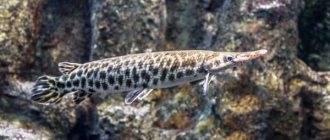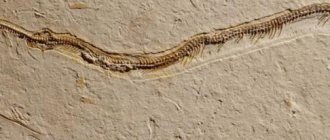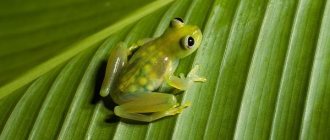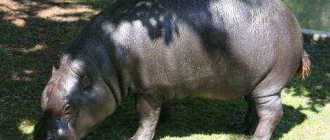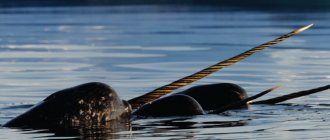Pike is one of the most popular fish in Russia. It is found in a variety of places: small swampy reservoirs, rivers and lakes. The predator has many varieties, including very ancient ones, dating back to the Mesozoic era.
Pike meat is very healthy and is considered dietary. Fishing is carried out all year round, but is especially active in summer and autumn.
Pike, translated into English: pike, pickerel.
Common pike: description of the fish and its characteristics
The common pike (Esox lucius) is found in all fresh waters of Europe, Asia and America. The toothy predator feeds on fish, but also does not disdain birds and snakes. Loves the coastal zone, thickets, as well as stagnant or weakly flowing water. It is necessary that the acidity of the reservoir be at least pH-4.75.
What family, class, group and order does it belong to?
Pike belongs to the pike family, the class of ray-finned fish, the phylum of chordates and the order of pike-shaped fish.
Features of the structure and coloring of the body
The common pike is the most numerous representative of the pike genus. Length 1.5 and even 2 meters, average weight 8 kg (maximum 33 kg, but this is nonsense). The color changes depending on the environment (in dark waters the fish may darken, in light waters it may look brownish or gray-greenish).
The common pike is characterized by:
- flattened head;
- large mouth opening;
- white belly with black speckles;
- blackish back and gray sides with spots.
Pike is distinguished by its protracted shape. The body resembles an elongated arrow. There may be transverse stripes on the sides, as well as large brown or olive spots. The fins are paired and have a characteristic orange tint.
The spots act as camouflage, helping to remain virtually invisible in the water, especially where there is vegetation or a lot of shade.
The predator is distinguished by a complete dental system and small, firmly attached scales. There are additional gills, but they are almost invisible.
Eyes: how she sees under water and what color she likes
The pike does not see its tail and everything that is behind it. She also cannot see above or below her. At the same time, her eyes are large, and she is able to closely monitor her prey.
The predator can see quite well to the right and left, and most importantly, straight ahead. To attract pike, fishermen choose bait with a dull color on sunny days, and brightly colored bait on cloudy days.
The cloudier the water, the darker the bait should be. The predator loves silver, bronze, bright (orange, green, yellow, red) colors. Usually they alternate provocative shades in combination with neutrals or black.
Does he smell and what smells does he like?
Pike can smell and love the aroma of shrimp, herring, anise and even garlic. Reacts primarily to blood and fish offal. Special flavors (natural or chemical) are also used for luring.
Attractants are used together with groundbait or bait. These products are available in the form of a gel, spray, syrup or paste. Pike loves only natural smells; it practically does not react to chemicals.
How the mouth works
Pike have a large mouth for capturing food. It has to use more force in its jaw muscles, so its teeth are sharp and designed so that the fish is able to immediately grab and hold its prey tightly.
On the lower jaw there are fangs of different sizes: at the beginning they are larger, at the end they are smaller, and there are small teeth in front. In the upper jaw they are designed so that they can change their position.
Predator teeth and their replacement
Pike are characterized by a change of teeth: the inner surface of the jaw is covered with soft tissue, under it there are rows of 2-4 replacement incisors, which are adjacent to the back of each active tooth, forming a single group.
The pike does not chew its prey: with its teeth it only grabs the victim and holds it. The process of replacing dull teeth in a predator occurs continuously.
Does pike have a bladder?
The swim bladder helps the predator dive to greater depths. In a filled pike bladder there is usually 19% oxygen, the rest is nitrogen and carbon dioxide. The organ is extensible and develops from the foregut. It remains in most freshwater fish throughout their lives.
The swim bladder has a direct connection with the intestines. It is thanks to him that the fish literally soars in the depths without putting any effort into it. It helps draw air in and out, creating ventilation in the esophagus.
How does the circulatory system of a predator work?
Pike, like many other fish, has a closed circulatory system. Blood leaves the heart through the arteries and enters through the veins. From the atrium, blood is pushed into the ventricle, and from it into a large artery - the abdominal aorta, which goes to the gills.
Here the blood is freed from carbon dioxide and saturated with oxygen. Arterial fluid collects in the dorsal aorta, which branches into capillaries in various organs. Blood continuously circulates in one closed circulatory circle.
Spreading
Pike is widespread in the fresh waters of Eurasia and North America. It usually lives in the coastal zone, in aquatic thickets, in stagnant or weakly flowing waters. In rivers, lakes, and ponds, pike lead a sedentary lifestyle. It can also be found in desalinated parts of the seas - for example, in the Finnish, Riga and Curonian Lagoons of the Baltic Sea, in the Taganrog Bay of the Sea of Azov. The pike is very widespread: its range covers almost all of Europe, northern Asia and North America, where, in addition to the European pike, three more species of pike live; it is numerous in the basins of the Baltic, Black, Caspian and Aral seas; in the north it is found from the Kola Peninsula to Anadyr; A special species of Amur pike lives in the Amur basin.
Varieties of pike
There are many varieties of predator: armored, black, relict, leopard, American and others. Each type has its own characteristics.
Shelled pike
The armored pike or gaspar is quite large in size - from 88 cm to 2 m or more (some individuals can reach 3 m). It has a longer snout and small pear-shaped gill rakers. Lives in water bodies of North and Central America. Known species include spotted shellfish, Florida, blunt-nosed and long-snout shellfish.
The fish got its name because of its hard shell in the form of diamond-shaped scales. Inside the first layer there is a bone base, and outside there is a layer of ganoin, a kind of enamel.
It can be caught well with natural bait all year round, especially in early spring. This species of pike is capable of forming small schools. It feeds mainly on small fish, often sick or weakened.
The color of the predator is greenish-silver with characteristic spots located throughout the body, including the fins and tail.
Black
Black pike or Esox niger lives in lakes and rivers of North America. Selects bodies of water with a temperature of 10°-20°C. The fish needs mainly freshwater places with a depth of up to 6 m. It feeds on crustaceans, small fish, snakes and mammals.
Like its Russian relative, the American black pike can be short in length - up to 40 cm. Weight can reach 1.2-4.25 kg. The predator's body is strongly flattened at the rear. The head is large and flattened with a long muzzle and prominent teeth.
There are characteristic stripes on the sides, just like the common pike. Despite its name, the black raptor is predominantly greenish-yellow in color, but has a noticeable dark stripe under each eye.
Feeds on small fish. There are often eyesores because pike are blind. This does not prevent the predator from surviving in the aquatic environment, since it senses the approach of prey by vibrations in the surrounding water.
Chukotka, Amur and northern pikes
These species live mainly in fresh waters in the East of Russia (in the Amur basin, Sakhalin, Ussuri, Sungari, Tugur, Uda, Lake Khanka, etc.). The predator has smaller scales than the common pike. Color: silver or greenish, dark back.
There are characteristic black spots on the fins or oblique transverse stripes. Fish can be very heavy - up to 20 kg. But the maximum body length usually does not exceed 1.1 m. Due to its decent weight, pike is often called trophy pike.
Muskinong
Maskinong or Esox masquinongy is the largest species of the pike family. Inhabits the waters of North America, mainly lakes and bays of rivers with weak currents. The length of the masking is about 1.8 m. The weight can reach 32-45 kg. The fish lives up to 30 years and loves a solitary lifestyle.
Females become sexually mature in the fifth year of life and lay from 60 to 100 thousand yellowish sticky eggs with a diameter of about 3 mm. The fish feed on their own kind, including quite large individuals. They fish for musky in early autumn: from September to mid-October.
Ling
This fish is also called baracuda - it is so aggressive. It attacks from ambush, using sharp teeth and a full body strike. It feeds on shrimp, small fish, and squid. Maximum length - 2 m. Can attack a person. It lives in a wide variety of places, including coastal areas of the eastern Atlantic.
It likes to be near the bottom over rocky soils; it does not form large aggregations. It is found at depths from 100 to 1000 m. The body is elongated and the head is long with a chin barbel and a rounded fin.
The back and head are reddish-brown, the sides are somewhat lighter, the belly is yellow to white. The posterior parts of the dorsal, anal and caudal fins are black with a light edge.
It is also edible, like the common pike, so its fishing is carried out by bottom trawls, gill nets and longlines. In the world register of marine species it is listed as Molva molva.
If you are allergic to seafood, it is better not to eat sea pike. But for everyone else, its meat is a storehouse of vitamins and nutrients. In particular, moth contains the entire set of B vitamins, as well as magnesium, calcium and potassium.
Pike tastes like cod meat, but is considered drier. Perfect for any dish, including restaurant delicacies.
Pike with horns
Dragon pike is quite rare. Mainly in the rivers of Siberia. It differs from other fish in having horns on its head and harder scales. Weight can reach 7−14 kg or more. It is extremely difficult to find such a fish.
Relic pike
Pike is one of the most ancient fish on earth. The body of the relict inhabitant of the depths, which has survived to this day, is covered not with scales, but with a shell. The length of such a predator can reach 3 m. The weight of the monster is up to 150 kg.
The relict predator can be found in water bodies of North and Central America. It also loves subtropical rivers and lakes with water temperatures of +10...+20 °C. The life expectancy of such ancient representatives of the pike genus is from 18 to 36 years.
Travyanka
The grass pike lives close to the shore in coastal vegetation. Weighs up to 2−10 kg. Feeds on fry and insects. Least active during hot periods. In appearance it is similar to an ordinary pike, but greener and thinner.
Grassfish are actively caught from mid-May to the end of August. For fishing, they look not for shallow water, but for thickets of grass at a depth of 1 to 1.5 m, or even 2-3 m. Grass can be found next to grass islands in a deep channel, in reed thickets at the confluence of channels.
mullet
The mullet-shaped pike is a marine species. It can reach a length of up to 3 m, but usually its dimensions do not exceed 1 m. Young specimens like to stick to lagoons or shallows, while adults, exceeding 8-10 kg, are often found in the open sea. The mullet-shaped fish lives in tropical and subtropical seas.
The predator is distinguished by a powerful and well-developed, fairly large lower jaw. Sea fish are as dangerous a predator as the common pike. Its body is covered with very small and rather dense silver-colored scales with stripes on the sides.
The fish can reach speeds of up to 42-43 km/h. It feeds on anchovies, mullet, horse mackerel, squid, crustaceans and shrimp.
Deep
Deep fish are heavy (at least 7-14 kg). They live at different depths, including about 8-10 m. They love places with a slight current, large snags, logs, and deep-sea stones. It is best to fish from a boat.
Landing such a large fish can take at least half an hour. Predators live alone in their holes.
African pike
African pike, Kafue pike (Hepsetus odoe) measuring no more than 70 cm and weighing up to 4 kg. The fish has a greenish-olive color with silver sparkles and a dark honeycomb pattern on its raised scales. The tail is two-lobed with a deep notch.
The predator loves quiet creeks and floodplains. It feeds mainly on small fish. Lives in the Congo and other African rivers.
Leopard print
Leopard pike is quite rare. Basically, this unusual color is found in the Amur predator. It can reach more than a meter, with a very large weight (up to 20 kg). The scales are small and silvery.
The spots are black-brown, randomly scattered throughout the body, starting from the head and ending with the tail.
American
Esox americanus or American pike is a species of predator that lives in the Mississippi River and other bodies of water in the Gulf of Mexico. Due to the characteristic color of its fins, it is often called the redfin. Loves dammed areas of rivers with heavily developed vegetation.
Externally, it is distinguished by a shorter snout and small size (up to 40 cm). There is also a subspecies of American pike - southern grass. They do not gain more than a kilogram of weight and are small in size. The fins are not orange.
Mississippi girt
Atractosteus spatula or alligator gar is one of the large fish species in the United States. It is found mainly in fresh water, but is also found in salt water bodies and salt marshes. The teeth are needle-shaped, the mouth is large.
The length of the carapace can reach 3 m and weigh over 130 kg. It is believed that the carapace appeared on the planet more than 100 million years ago during the Mesozoic era. The caviar of this fish is poisonous, and the meat of the shellfish is eaten extremely rarely.
Pike lifestyle
Pike is a loner. She loves to swim in mud-covered lakes, in rivers with fast and medium currents. Prefers silence, fallen trees, stones, holes, shallow places with thickets of reeds and other vegetation.
It hunts very intelligently - waiting in ambush in thickets of grass or other inconspicuous places. Seeing the prey, the predator lunges at it and bites it.
Habitats and times of activity
The range of pike is very large. It lives in Europe, Asia, America, the Arctic Ocean, and northern seas. Usually the predator hangs around in the coastal zone, does not like fast currents, shallows, or icy water, so pike is never found in mountain rivers.
The fish is active in the early morning and late afternoon, in the summer - at 4-5 am, when the pike ambushes small fish. During the day, the bite stops completely. You can return to hunting only after six or seven in the evening. After 11 at night the bite is canceled again.
Where is it found in the fall and where does it winter?
In autumn, the predator begins to actively hunt and eat. Before the ice begins to form, a real pike zhor is observed, which is called “pre-winter”. The first banks are already appearing, and open water fishing is becoming truly trophy.
In autumn, pike often spend time under snags and islands with reeds.
Pike hibernate without falling into suspended animation. She continues to hunt and eat. Her activity and aggressiveness of reactions are slightly reduced. Each predator has its own single route.
In winter, you can meet pike near the borders of reed thickets and among vegetation. The biggest bite occurs during the first frost and the period of ice formation, when the fish reduces its activity and gluttony.
Fishing calendar
Pike is hunted all year round, but most successfully in late autumn. At this time, the predator is active and reacts to large baits. In winter, fish mostly swim over holes where their prey can hang out. In the spring she spawns.
From late February to early March, the fish moves to a place where it can lay eggs. These are mainly bays protected by vegetation. With warming, the predator is already actively moving throughout the river.
In hot weather it goes deeper and into cool holes; it loves shaded thickets of reeds. The predator hunts during this period mainly in the evening or in the morning. The “pike” season begins in the summer, when an experienced angler can catch it with literally any bait.
What does it eat?
Pike survives mainly by eating fish (roach, crucian carp, perch, gudgeon, goby, etc.). But the menu may also include snakes, small birds (such as ducklings), insects, worms, leeches, mice and even moles. In the stomachs of the pike they also found trapped squirrels and waders, which apparently went down to drink. The pike menu depends on the time of year.
In winter, she likes to eat fish; in summer, she prefers roach, bleak, large bitterling, and frogs. In the spring, pike can be caught even with small live bait, but in the fall the bait should be larger.
Why are there leeches on pike?
Sometimes a predator that becomes inactive is surrounded by leeches. There is little harmful in them, you just need to remove them and throw them away before cooking the fish. After this, the pike can be heat treated or salted.
What do adults eat?
The basis of the predator's diet is animal protein. Its diet depends on the types of small fish that inhabit the reservoir. Adult pike eat crucian carp, gudgeon, goby, carp, roach, perch, bream, broadmouth, minnow, and dace. The hungry predator attacks small reptiles and waterfowl. She does not refuse frogs, mice, rats, crayfish, moles, squirrels, ducklings, adult ducks and drakes.
The only creature that disgusts pike is the river toad. It is not one of those inhabitants of the reservoir that pike feed on and gets along well with it.
Facts about pike
In addition to its specific appearance, pike has many other differences.
Natural enemies
The pike itself is a predator and has few enemies. The exception is otters and eagles, which sometimes hunt it and are very successful. In the southern regions, pike can be attacked by catfish.
Small-sized representatives are also hunted by perch, rotan, and large pike perch. The pike is also destroyed by the person for whom it represents a real trophy.
How does a pike attack in water?
The pike attacks the victim quickly, making 1 or 2 bites with its jaws. Once in the mouth of a predator, small fish are practically doomed to death, since their teeth literally cut like a razor. Having swallowed the bait, the pike pulls it into the shelter, so you cannot immediately pull out the predator.
After some time, the pike will try to turn the bait over and swallow it (about 15 seconds after the attack).
Why is pike called a freshwater shark?
Due to its aggressiveness and gluttony, pike is sometimes called a freshwater shark. The predators have a lot in common: both love to swim alone and feed on small fish, shrimp and crustaceans. They do not attack humans, but behave aggressively.
The lifespan of sharks reaches 30 years, and pikes, in most cases, live much shorter lives (up to 7 years) due to pollution of rivers and reservoirs. There is also a difference in size - sharks are much larger than giant pike.
What happens if you throw a pike towards piranhas?
Teenagers sometimes undertake such experiments for the sake of an interesting video on YouTube. The problem is that piranhas live in a different environment than freshwater pike and, once in the wrong environment, the toothy predator immediately dies.
Is a pike bite dangerous, have there been attacks on humans?
A pike can bite a fisherman. Such cases have happened more than once. A fish bite can be dangerous because the predator's teeth are very sharp and mobile. It is advisable to always have a patch, brilliant green or iodine with you to treat the bite site.
You should only climb into the mouth of a fish using a gaper so that it does not have time to close its mouth and injure your hand.
Reproduction and offspring
Pike are actively breeding. The predator's fertility is up to 200 thousand eggs 3 mm in diameter. The ideal depth for spawning can be from 0.5 to 1 m in places with sparse algae thickets. When spawning, the female lays eggs, and several males, following her, water her with milk.
The eggs attach to the plants, and then fall off and lie on the bottom of the reservoir. It takes 8-14 days for the fry to develop. At first, their diet includes small crustaceans, later - fry of other fish. Puberty of pikes occurs at 2-4 years.
River pike, 2 weeks after spawning, makes forays into fast water to shallow riffles. When casting in shallow water, you must immediately reel in the line at a given pace so that the nozzle does not become clogged with plant debris.
The success of fishing with “dirty” live bait decreases significantly. The main trophy during the spring pike feast is individuals up to 2 kg. Large ones are found less often than in August and September.
How to distinguish a male from a female
The male differs from the female in the type of urogenital opening. In males it looks like an oblong slit, and in females it looks like a depression. Male pike are smaller in size and have a more slender body than females.
How many times a year does spawning occur and at what time?
Spawning time is spring (from early March to May). The ability to reproduce occurs by 2-3 years, when the body length reaches 30-35 cm. Spawns at a fairly low temperature (4-6 ⁰C).
On the approaches to spawning grounds, at a depth of 0.5-1 meters, clusters of fish form, and there are usually several males around one female.
Pike fishing is not allowed during the spawning period from March 1 to April 15-25. In Belarus, fish spawn even earlier - at the very beginning of March. The timing and timing of spawning depend on the climate and region where the fish live.
The warmer the water, the faster the process occurs. The optimal water temperature for pike spawning is 5-7 degrees.
A group consisting of one female and several males constantly moves around the spawning area. It often happens that in those reservoirs where wastewater is discharged, eggs die.
After spawning, the pike recovers for about a week, actively absorbing food. To restore strength, she needs to actively eat. It is during this period that you can actively hunt for a predator, since it is ready to grab any bait.
Zhor after spawning occurs at the end of April-May. This period is considered by fishermen to be the most successful for hunting predators.
But during the spawning period, catching is prohibited. Violation of the ban will result in the payment of a substantial fine (up to 300 thousand rubles). The ban is being introduced specifically to prevent the population of this valuable fish from being limited.
What does a pike fry look like and what is it called?
The pike fry, or “little pike,” is initially green in color and looks like its little parents. But after a year, the squinting becomes gray in color with characteristic spots on the body. Children of pike are characterized by a size of up to 20 cm and a weight of up to 1 kg. They are caught from August until late autumn.
How many years does he live?
Pike lives on average 7 years. The maximum age of pike in commercial catches does not exceed 20 years. There is also information in the media about the capture of a 33-year-old pike.
How to determine age by weight and size
Usually the age of a pike is determined by the annual rings on its scales. You can accurately determine the age only by dissecting the pike's head and examining its bones. This is mostly done by professionals, since it is very easy to make a mistake.
It is believed that if a pike is small - 25-35 cm, then it is no more than 1-2 years old. If a predator reaches a meter, its age can be very large, including up to 20 years.
Life cycle [edit | edit code]
Depending on the water temperature, the development of eggs occurs within 8-14 days, the larvae that hatch from it are 6.7-7.6 mm in length. As the residual bubble dissolves, the larvae switch to feeding on external resources: small crustaceans - cyclops and daphnia. With a length of 12-15 mm, pike can already hunt larvae of carp fish. Spawning of carp fish usually occurs after the spawning of pike, which provides food for the young pike. After reaching a size of 5 cm, the pike completely switches to feeding on the fry of other fish, mainly carp. If a pike of this size is kept in an aquarium and fed with small crustaceans, it will die, since the energy costs for obtaining food are not compensated by the nutrients available in such prey.
It happens that in the spring pikes, along with melt water, enter the swimming lakes. After some time, the connection between these reservoirs and the river is interrupted, and the life of the fry that hatch in such conditions is very different from their life in the river or large permanent reservoirs. Due to the lack of food resources, the growth of pike here is extremely uneven: the length of fish of the same age can differ by 2-2.5 times. Small individuals become prey for larger ones; sometimes, with a significant lack of food resources, pike 3-4 cm long already resort to cannibalism.
It is interesting that such degenerate food chains, consisting only of pike (when fry feed on plankton, large pike feed on fry, and even larger ones feed on them), are observed on a regular basis in a number of reservoirs. This happens in the northern (usually tundra) lakes of Yakutia and Canada, where the amount of nutrients is extremely small, that is, not enough to support any complex food pyramid. In addition to scientific literature, such “pike lakes” are also described in fiction, for example, in the story “Canada Smelling of Resin” by the Polish writer Arkady Fiedler.
At the same time, despite the extremely simplified structure of the food chain, the ecosystems of such reservoirs have been in a stable state for centuries - researchers have not found any bone remains, except for pike, in bottom sediments and on the coast in such reservoirs; this is also confirmed by the folklore of local residents.
Maximum weight and size of pike
In nature you can find pike of completely different sizes. There are both very small species and incredibly large ones.
How to determine the weight of a pike by length
The weight of a pike can be determined by eye, without weighing it, but focusing on its approximate length. A fish 80 cm long usually reaches a weight of 5 kg, 84 cm - 6.2 kg, 87 cm - 6.9 kg, 90 cm - 8 kg.
The fish is measured from the beginning of the snout to the end of the scales. Smaller fish are defined as follows: 25 cm - 0.1 kg, 35 cm - 0.3 kg, 54 - 1 kg, 66 cm - 1.4 kg.
Minimum size allowed for catch
Pike in the Russian Federation can be caught with a size of 35 cm. The same requirements are established in Belarus and Ukraine.
How many times is pond pike lighter than Black Sea pike?
Pond pike weighs 10 times less than larger sea fish. For example, if the Black Sea variety can weigh about 25 kg, then the pond inhabitant is only 2.5 kg.
The largest caught pike in the world
It is believed that the weight of the largest common pike in the world is 25-28.35 kg. But in the Irish Lough in the 19th century, a pike weighing more than forty kilograms was caught.
Are there albino pikes?
White pike are extremely rare. They are mostly gray-green and dark in color.
In cooking [edit | edit code]
Pike is sold live, chilled, frozen and canned. The meat is bony and sometimes smells like mud; dietary, because contains about 18.4% protein, 1.1-3% fat [3]. Large and medium-sized pike are most often used chopped (for fish cutlets, meatballs) and stuffed, small ones (weighing about 200-300 g) are boiled in a spicy broth: for 1 kg of fish - 0.75 liters of water, 1 carrot root, parsley, celery, 1 onion, 3 black peas and 1 allspice pea, 1 bay leaf; cook everything together for 5-7 minutes, then put the fish in the broth and cook until tender (about 20 minutes), always over low heat, avoiding a strong boil, then remove the fish with a slotted spoon, put it on a heated dish, sprinkle with parsley and serve with boiled potatoes and butter. Small pike can also be fried or used for fish soup. In the mid-20th century, the British considered pike the most delicious and expensive fish. In some countries, to this day, pike dishes are considered a delicacy.
Pike fishing methods
Pike is caught throughout the year. Large individuals more often bite the bait in the morning, and in windy weather - in the middle of the day. On cloudy days, fishing is more successful than on sunny days.
When fishing for a pike on a spinning rod, it can shake its teeth and jump off, so you need to be very careful. The secret to a successful hunt is to search for hidden “pike” places (deep, snag areas, whirlpools, rolling holes).
Amateur and poaching gear
They catch the predator with a spinning rod, a line, winter live bait, float and bottom fishing rods, mugs and other gear. For fishing on a large scale, fixed nets are used. They often catch it from the shore with live bait, in the pools with a sinking wobbler, and from a boat with tackle with a large bleak.
Used for fishing:
- supply;
- girder;
- circle;
- live bait fishing rod;
- winter harness and other gear.
Poachers use various methods, including traps that are not prohibited by law.
Hunting for live bait is prohibited on the territory of wintering pits while the corresponding ban is in effect.
Otherwise, you can fish in all permitted fishing areas all year round. When fishing for live bait, you can use up to five gear (rods, circles, girders or donks), with a total number of hooks equal to five.
Unconventional fishing methods
Unconventional methods are also used to catch predators. For example, fishing with unloaded rubber with imitation fish in places where there is a high risk of catching classic baits: spinners with a tee or wobblers.
Silicone baits of various sizes (mainly for small fish or shrimp) are superior to all other types of devices for catching predators.
The bait is thrown into the water and the fishing line is reeled in. During this process, the bait begins to vibrate, attracting a predator. For fishing, they also use a trap (single or double), jamming on the first ice, and sometimes a crossbow or bow.
The benefits and harms of pike for humans
Pike has a lot of useful properties and has a beneficial effect on the human body. Its only drawback: fish caught in dirty waters will most likely be infected with harmful bacteria or even parasites, so it is better to avoid hunting in such places.
What are the benefits of meat and liver for humans?
Pike meat contains 1-3% fat and is a dietary product (100 grams of pike contains only 84 kcal). Meat contains vitamins PP, E, C, B9, B6, B2, B1, A, and many valuable minerals. Pike is often recommended for those who have problems with the heart, blood vessels, and a predisposition to diabetes.
Fish oil regulates blood cholesterol levels and has a positive effect on the gastrointestinal tract. Pike caviar normalizes blood pressure and increases hemoglobin in the blood. The liver of a predator is considered a real delicacy, as it contains a lot of healthy fat and microelements.
Pike meat is often fried in batter and used for dietary salads and other dishes. The liver of a predator contains vitamins (B1, B2 and PP), which improve the metabolism of fats and proteins in the body. Pike contains a lot of phosphorus, iron and calcium. They are necessary for those who are engaged in mental activity or study.
However, fish also has disadvantages. It can accumulate harmful bacteria and substances if it is in bodies of water where sewage flows, so it is best to eat fish caught in environmentally friendly places.
Does pike have opisthorchiasis, tapeworm or other parasites?
As with any river fish, pike can contain parasites. They look like thin threads or large worms, but, for example, opisthorchises are not visible to the human eye at all and cannot be detected when cutting.
Tapeworm is one of the most dangerous parasites; it looks like a large flat white worm. The consequences of eating contaminated fish can be very serious: opisthorchiasis can provoke oncological pathologies, digestive disorders, dyspeptic disorders, and intestinal obstruction syndrome.
In addition, symptoms of a nervous system disorder may occur. In addition, fish infected with helminths is tasteless and actually spoiled.
Helminths can be found in the gills, inside the abdominal cavity and other places. If parasites are found, the fish should not be eaten even after cleaning and rubbing with salt. But if the helminths are not visible, freezing will help get rid of the larvae: after freezing for 20 days they become safe.
Heat treatment also cleans the fish, but you need to fry the pieces for at least 10-20 minutes. It takes 14-40 days to salt the fish, depending on the size of the carcass. For every 10 kg take 2 kg of salt.
Why pike can be snotty
Pike are characterized by the presence of mucus on their scales. It is secreted by many fish for easier gliding in the water. To get rid of this drawback, the fish is thoroughly washed before cutting and kept in cold water for at least half an hour. If this does not help, you can rub the pike with salt and rinse again.
How to remove the smell of mud
River fish may have an unpleasant muddy odor. To remove it, the fillets are marinated in milk and water or kept in a solution with the addition of lemon. You can also wash it in water and vinegar. After this, the smell of the swamp will go away forever.
Pike is a very valuable and nutritious fish. It can be found not only in reservoirs of Russia, but also in North and Central America. Pike is a healthy, dietary product that can be salted or simply fried, boiled or baked. Its meat contains a large amount of protein, 1-3% fat, and many useful vitamins and minerals.
Catching a multi-kilogram pike is a real success. But to do this, you need to know the “pike” places in advance, choose the right time for fishing, stock up on the necessary gear and a lot of patience.
